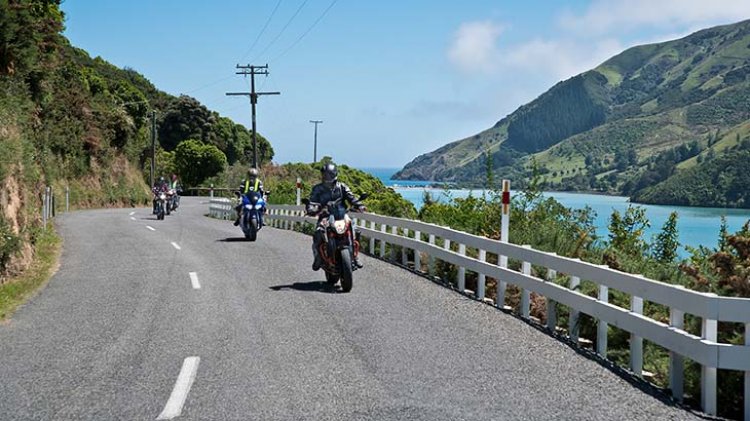May 19 Motorcycle Awareness Month

Why you need to look again to see motorcyclists
12 January 2022
As longer days and warmer weather descends upon us, you’ll see more and more motorcycles on the road. Still can’t see them? Look again.
All motorcycle riders understand and accept the risk of getting on their bike. To better equip themselves for any situation on the road, they can complete Ride Forever courses.
However, drivers also have a role to play in keeping motorcyclists safe.
Between 2015-2019, 76 people died in motorcycle crashes in urban areas and 4,255 more were injured. 64% of these crashes happened at intersections, and of that 64%, other vehicle drivers were at fault 82% of the time.
Why are these crashes happening?
“Sorry mate, I didn’t see you,” is a line many motorcyclists will have heard before. But as it turns out, a lot of drivers don’t actually see them.
While drivers can’t and shouldn’t put all the blame on their brain, there are a few optical illusions that partly explain why motorcyclists can be hard to see.
Injury prevention leader, Dave Keilty, says drivers should be more aware, particularly thinking about blind spots and understanding how motorcyclists might move.
Saccadic masking
When you move your eyes, they jump from Point A to Point B and don’t move smoothly like your brain leads you to believe. Much how a video camera records frames, each “jump” our eyes make (called a fixation) is a frame.
Our brain merges each fixation into what we think is a smooth picture, but the movements between fixations (called a saccade) are extremely blurred and aren’t helpful images for our brain to process, so it doesn’t. This phenomenon is called saccadic masking.
While turning your head and looking at an intersection, each saccade acts as a blind spot. If a motorcyclist happens to fall in one of these saccades, you won’t see them.
The faster you move your head, the longer the saccade and the higher the risk of you not seeing motorcyclists or any other smaller road-user.
By taking your time at intersections and pausing as you look again, you can overcome the tricks of your eyes and brain, reducing the risk of “not seeing” motorcyclists before turning.
Read more on saccadic masking.
Motion camouflage and the looming effect
All motion is hard to see when it’s directly along your line of sight, especially for something small like a motorcycle. When you’re stopped at an intersection and looking at a motorcycle down the road, it might look like it’s far away.
In reality, the motorcycle is closer than you think because your eyes can’t distinguish any change in its size. This is called motion camouflage.
As the motorcycle does indeed get closer, it appears to get increasingly bigger at a rapid rate and the motion camouflage is broken.
The illusion of objects (in this case, motorcycles) rapidly growing as they approach is called the looming effect.
Slowing down and looking again at intersections gives you the opportunity to judge the true speed of motorcyclists and gives you confidence that the way is clear.
Beat your brain’s tricks
Motorcyclists can be hard to see. Illusions like saccadic masking and the looming effect make it seem like they come out of nowhere.
This summer, stay on top of your brain’s tricks. Take your time and look again for motorcyclists. Don’t just look twice, look again and make sure there is space before you turn.


















